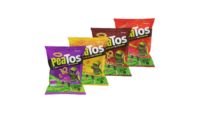Warehouse/Club Stores
Attracting the most affluent customers and ringing up the highest sales per shopping basket, the warehouse/club sector sits on a nice perch; but perhaps it could touch down on more mainstream merchandising, particularly in candy.
| Channel Leaders* | |
| Chain | Annual Sales (in billions) |
| 1. Costco Wholesale Corp. | $51.9 |
| 2. Sam's Club | $39.8 |
| 3. BJ’s Wholesale Club Inc. | $7.7 |
| *For 2005 | |
Wholesale clubs are certainly not looking to be all things to all people. In fact, right from its inception, the channel made it clear that in order to shop in it, you had to, literally, “join the club.” The focus was high quality, low prices, and special bulk sizing, attracting small business owners, as well as high-end consumers with money to spend on stocking up. The sector is also quite popular for its “treasure hunt” appeal — club customers just love to search the wide warehouse aisles for limited-time bargains that are not regularly advertised. SKU selection is limited, however; very competitive pricing on multi-packs and “treasures” has led to high-volume purchases. The average shopping ring is now $87, up from $82 five years ago, according to ACNielsen, and it is not uncommon to hear shoppers say, “I can’t leave the club without spending a hundred dollars” (or hundreds of dollars).
After more than half a dozen clubs hit the scene in
its earliest days, the channel has consolidated down to three major players
today: Costco, Sam’s Club, and BJ’s. All of them have
increasingly expanded their store count over the years, but Costco is
currently most aggressive with its recent announcement that expansion plans
call for a total of 700 stores.
Split in two
A criticism of the channel has to do with its
“bifurcated business model,” and the confusion it could bring
to its dual consumer targets.
“Basically, two-thirds of the channel’s
volume comes from middle- and upper-income consumers, and one-third comes
from small businesses,” maintains researcher/consultant Frank Dell,
CEO of Stamford, Conn.-based Dellmart & Co. “Because of the
continued growth of chains in all segments, it’s getting increasingly
difficult for the small business/retailer to stay in business. Small
businesses are not dead, but the club stores are going to have to get
smarter and redefine their markets as to who they’re serving to be
successful. Right now, I see BJ’s going one way with it, Sam’s
going another, and Costco going another.”
|
The positive flip side to the situation is that
initially, club stores “kind of replaced the traditional wholesalers
of old, only they did it more efficiently and at better price
points,” according to one anonymous analyst.
Assuming that clubs will want to focus primarily where
the volume is — with the end consumers — some mainstream
merchandising could be wisely incorporated as the channel moves forward.
One of the most obvious departments for this is confections.
Mainstream moves
“Sometimes those big tubs of chocolate-covered
raisins and licorice sticks are just too much for instant
consumption,” quips Jenn Ellek, director of trade communications and
marketing for the National Confectioners Association. “There are
opportunities for smaller sizes in warehouse clubs to appeal to the
consumer who doesn’t want to stock-pile snacks and candy,” she
explains. “The most important thing is that this can be done without
trending down dollars. It’s additional business.”
Using findings from a recent NCA/Dechert-Hampe report,
“Expanding the Dimensions of Confectionery, A $10 billion
Opportunity,” Ellek maintains that if the channel were to sell
front-end candy, for instance, “they would increase their
confectionery sales by 25 percent.” She adds, “Consumers
checking out would be attracted to single packs of candy just like they
would anyplace else. It’s a very large opportunity.”
Other ideas for club confections include “better
signage in the aisles that house candy and adding selection and price
points,” according to Ellek.
Will boomers balk at bulk?
Besides better candy sales, there’s an even more
macro reason why the channel may wish to rethink some aspects of its
positioning. “Their whole reason for being is to serve their members,
but their members are changing gradually, and they may want to start
thinking about having differentiated packages and sizing,” says
Anthony Raissen, president of marketing consulting company InterQuantum,
LLC, based in Encino, Calif.
“The jury is out on the whole portion-control
craze, but it’s important for all manufacturers and retailers to keep
an eye on what makes sense for today’s lifestyle and what consumers
are actually buying,” adds David Fields, managing director of
Ascendant Consulting, LLC, based in Ridgefield, Conn. Boomers, especially,
are predicted to “downsize” as they grow older.
“Less-is-more” packaging and pantry loads will most likely be
part of that equation.
Another threat to the channel is the saturation of its
stores. “You need X amount of population and Y amount of miles from
consumer to the store — it’s generally around 100,000 people
living within a 15-mile radius to the store — and there is a point
where it’s not going to pay for them to build any more,” says
Dell.
|




